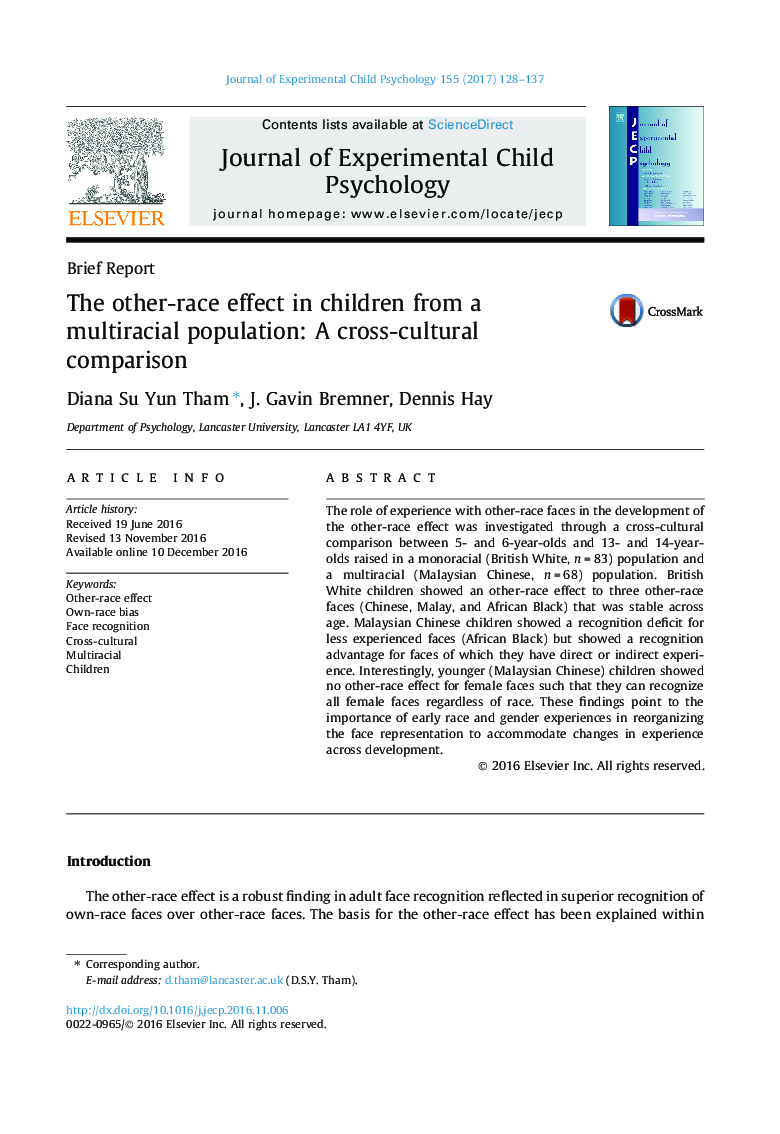| Article ID | Journal | Published Year | Pages | File Type |
|---|---|---|---|---|
| 5040077 | Journal of Experimental Child Psychology | 2017 | 10 Pages |
â¢Examines the ORE in children from a monoracial vs. a multiracial population.â¢British-White children showed an ORE to all other-race faces.â¢Malaysian-Chinese children showed an ORE to one other-race face only.â¢5-6-year-old Malaysian-Chinese children showed no ORE for female faces.
The role of experience with other-race faces in the development of the other-race effect was investigated through a cross-cultural comparison between 5- and 6-year-olds and 13- and 14-year-olds raised in a monoracial (British White, n = 83) population and a multiracial (Malaysian Chinese, n = 68) population. British White children showed an other-race effect to three other-race faces (Chinese, Malay, and African Black) that was stable across age. Malaysian Chinese children showed a recognition deficit for less experienced faces (African Black) but showed a recognition advantage for faces of which they have direct or indirect experience. Interestingly, younger (Malaysian Chinese) children showed no other-race effect for female faces such that they can recognize all female faces regardless of race. These findings point to the importance of early race and gender experiences in reorganizing the face representation to accommodate changes in experience across development.
